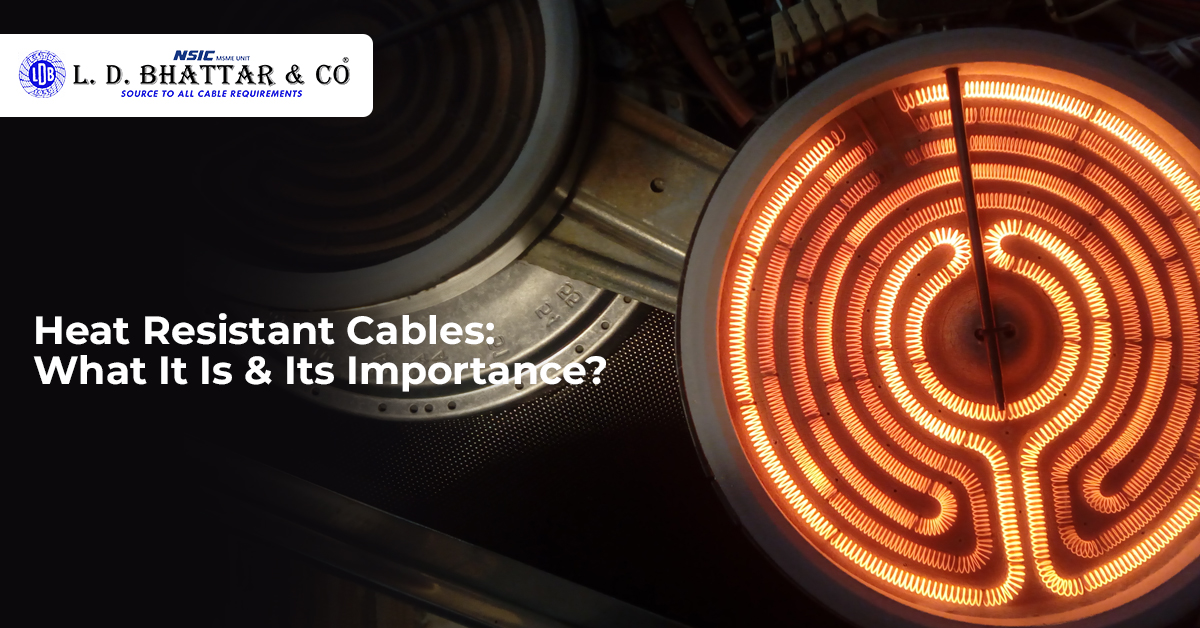Heat Resistant Cables: What It Is & It’s Importance?

Wiring up some gadgets and appliances requires using heat resistant cables. Do you know why? This is because it helps prevent melting or overheating of wires and also smooth running of your electrical appliances. Have you ever thought about how cables cope with such extreme heat? Actually, there are different types of cables available and you should choose them according to the gadget or appliances you need them for.
L.D. Bhattar & Co is the leading high-temperature cable manufacturer in India. We manufacture several types of cables to serve different purposes. In this blog, we will delve into what a heat-resistant cable is and its importance. Explore more below.
What is a Heat-Resistant Cable and Its Importance?
What is a heat-resistant cable?
A heat resistant cable is specially designed to encounter even extreme heat. They can withstand extreme temperatures without any electrical or mechanical stress. They are an excellent choice if you need a cable for outdoor use as they can withstand seasonal changes seamlessly with minimal maintenance.
It is no surprise that the world is suffering from rising temperatures due to the climate crisis. This is why choosing the right cable depending on its applications is crucial. Using inappropriate cables can impose significant risks. Furthermore, choosing the right high-temperature cable manufacturer in India is equally important to be assured of its quality.
Importance of Temperature-Resistant Cables
Do you think only heat affects cables? If yes, then let us tell you that cold temperatures also affect cables equally. It’s just that the way heat affects cables is different from cold temperatures.
Withstand Temperature Fluctuation:
A person chooses temperature-resistant cables for the environments and applications where temperatures are supposed to see fluctuations and they should be able to function without any hassle or problem withstanding the changes and adapting to them.
Wide Application:
It has diverse industrial applications, from air-conditioning to refrigeration to ceramics or glass processing as well. Hence, the scope of using temperature-resistant cables is huge.
Prevent Material Damage:
When it comes to heat-resistant cables, the higher the temperature, the softer the outer jacket material or the cable becomes. This impacts the overall mechanical load capacity. Hence, choosing the right cable is critical at high temperatures in order to prevent material damage.
For example, a PVC outer jacket turns very soft as soon as it is exposed to extreme heat. This affects its durability considerably and eventually impacts its safety. We suggest using a PUR or TPE jacket material in such a situation as these materials can withstand heat and also help with heat dissipation.
Let’s have a look at what heat dissipation is.
What is heat dissipation?
Heat dissipation occurs when strong currents pass through a cable which causes intense heating. This eventually impacts the cable and its durability negatively. But, you can avoid this scenario by choosing the right core size and material. This will facilitate the passing of currents without excessively heating up the cables. Not choosing the correct core can lead to cable failures.
Let’s quickly have a look at the applications.
Uses for Higher Temperatures
Heat-resistant cables are used mainly for appliances and gadgets that are supposed to cope with intense heat on a daily basis. For instance, a crane is being used in the offshore or port area. The cables here are not just exposed to UV radiation during summer but also to high temperature direct solar radiation. Similarly, there are various industries where applications are exposed to external elements like agriculture, construction, and others.
Choose Us For The Best Heat-Resistant Cables
Established in 1965, L.D. Bhattar & Co. is the manufacturer and supplier of high-quality heat-resistant and compensating cables. You can count on us with your requirements. We have successfully completed over 3654 projects with 5630 installations. Get in touch with us today or check our website to know more about our products.
